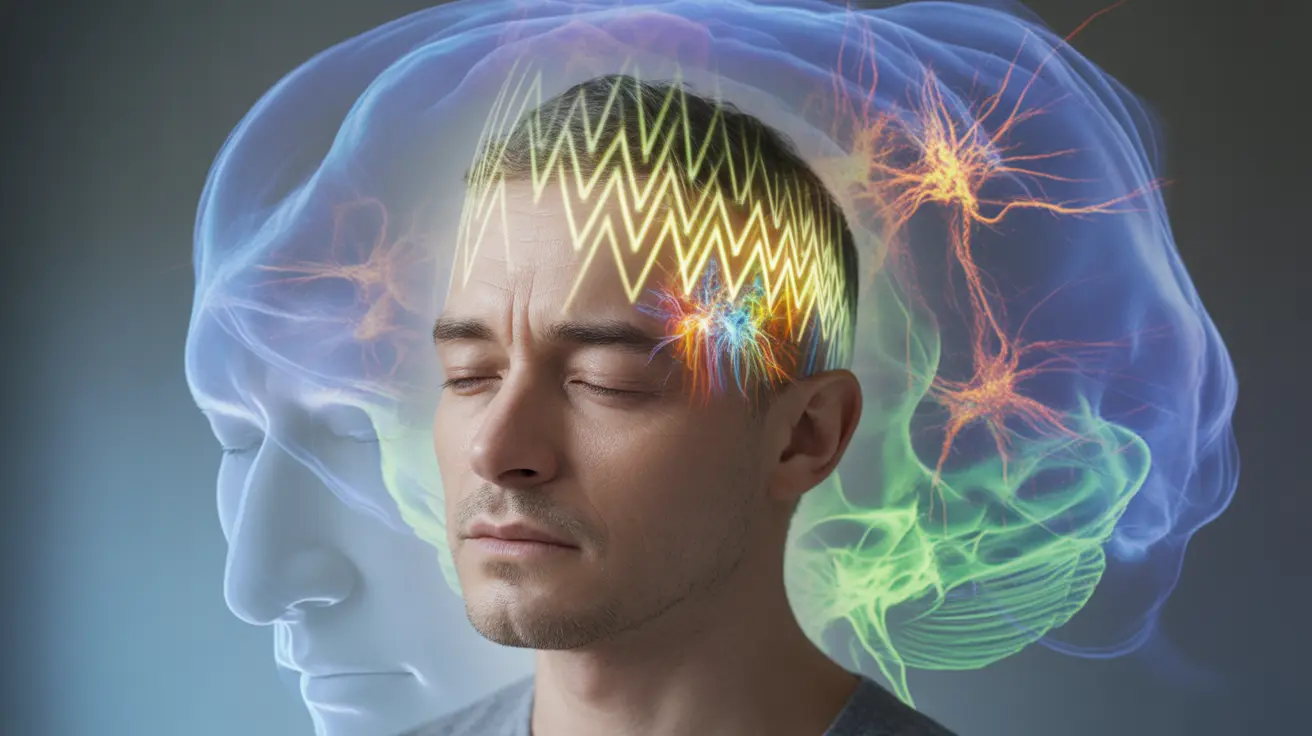Migraine with aura is a distinct type of migraine headache characterized by temporary neurological symptoms that typically occur before the actual headache pain begins. These warning signs, known as auras, can significantly impact a person's daily life and require specific management strategies. Understanding the unique features of migraine with aura is crucial for proper diagnosis and treatment.
While approximately 25-30% of migraine sufferers experience auras, many people are uncertain about what constitutes an aura and how to distinguish it from other neurological symptoms. This comprehensive guide will explore the characteristics, warning signs, and effective management strategies for migraine with aura.
Understanding Migraine Aura Symptoms
Migraine aura symptoms typically develop gradually over several minutes and can last up to an hour. The most common aura symptoms include:
- Visual disturbances (zigzag lines, flashing lights, blind spots)
- Numbness or tingling, usually starting in one hand and moving up the arm
- Speech difficulties or trouble finding words
- Weakness on one side of the body
- Changes in sense of taste, smell, or touch
These symptoms usually resolve completely once the aura phase ends, though they may be followed by the headache phase of the migraine. Understanding these distinct symptoms is crucial for proper identification and treatment.
Distinguishing Migraine with Aura from Other Conditions
While migraine with aura symptoms can be alarming, knowing how to differentiate them from more serious conditions is essential. Unlike a stroke, migraine aura symptoms typically:
- Develop gradually rather than suddenly
- Spread over several minutes
- Are temporary and fully reversible
- Often affect both sides of the visual field
- Include positive symptoms (added sensations) rather than just loss of function
Common Triggers and Prevention Strategies
Identifying and managing triggers is crucial for preventing migraine with aura episodes. Common triggers include:
- Hormonal changes
- Stress and anxiety
- Certain foods and beverages
- Changes in sleep patterns
- Environmental factors (bright lights, strong smells)
- Weather changes
Lifestyle Modifications for Prevention
Implementing these preventive measures can help reduce the frequency and severity of episodes:
- Maintaining a regular sleep schedule
- Practicing stress management techniques
- Following a consistent meal schedule
- Staying hydrated
- Avoiding known trigger foods
- Regular exercise (with appropriate intensity)
Treatment Approaches
Treatment for migraine with aura typically involves both acute and preventive strategies. Common treatment options include:
Acute Treatments
- Over-the-counter pain relievers
- Prescription migraine medications (triptans)
- Anti-nausea medications
- Combination medications
Preventive Treatments
- Beta-blockers
- Calcium channel blockers
- Anticonvulsants
- CGRP antagonists
- Botox injections (for chronic cases)
Silent Migraines and Aura Without Headache
Some individuals experience migraine aura without developing a headache, known as silent migraines. These episodes can be just as disruptive as traditional migraines and require similar management approaches, even though the pain phase is absent.
Frequently Asked Questions
What are the common symptoms of migraine with aura and how long do they last?
Migraine aura symptoms typically last 20-60 minutes and include visual disturbances, numbness or tingling, speech difficulties, and sensory changes. These symptoms usually develop gradually and resolve completely before the headache phase begins.
How can I tell the difference between migraine with aura and a stroke or other serious condition?
Migraine aura symptoms develop gradually over several minutes, are temporary, and usually include positive symptoms (added sensations). Stroke symptoms typically occur suddenly, may be permanent, and often involve loss of function. When in doubt, always seek immediate medical attention.
What triggers migraine with aura and how can I prevent or manage these triggers?
Common triggers include hormonal changes, stress, certain foods, sleep disruption, and environmental factors. Prevention involves identifying personal triggers through a diary, maintaining regular routines, and making appropriate lifestyle modifications.
What treatment options are available for migraine with aura and how effective are they?
Treatment options include acute medications like triptans and preventive medications such as beta-blockers or anticonvulsants. The effectiveness varies by individual, but many people find significant relief with a combination of medication and lifestyle changes.
Can migraine with aura occur without a headache and what is a silent migraine?
Yes, some people experience migraine aura without developing a headache, known as silent migraines. These episodes include typical aura symptoms but skip the headache phase. They require similar management approaches to traditional migraines with aura.




